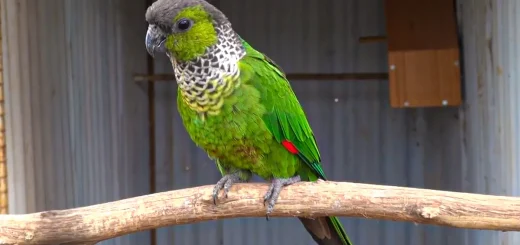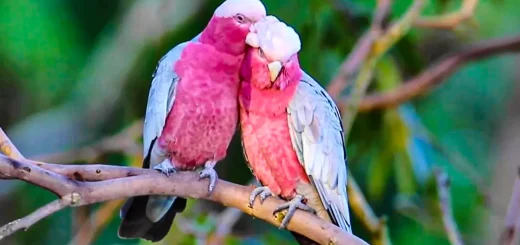Scarlet Macaw Species Bird

Description of the Scarlet Macaw
The Scarlet Macaw vessel is considered by many to be the most beautiful member of the family and it is certainly most colorful, with huge solid switches of red, blue and yellow. it among the most popular of large breed breeds as a pet.
Common names
There is no other widely used common name for the red spider.
Scientific name
The causal name for a red macaw is Ara macaw. Many experts have defined two subspecies. the Are found in Central America, mostly in Belize, Panama, Mexico, and Nicaragua. The Macaw is larger in Central America and greener in blue than its wings in South America.
Origin and History
The red macaws are native to the tropical rainforest of Central and South America. The preferred habitat is about 1000 to 3000 feet of evergreen forest. In the wild, it is mostly in the root of the tree and in the layers of the eye.
This species has a very wide natural range. but it is in many cases threaten by deforestation and illegal trapping for livestock. Red-colored spiders cite (Convention on the International Trade of Endangered Species) Appendix 1 List that prohibits the trade of wild birds.
Volume
The glossy macaws increase the average adult size by 35 inches, from the tip of the beak to the tail end. They usually weigh between 2 and 3 pounds.
Average lifespan
Scarlet Macaw can live 80 years or more. though 40 to 50 years is more common.
The mood
The red macaws are extremely intelligent birds, with an abundance of energy and personality, but they need daily socialization and stimulation and they need to be kept that way. They can be quite easily bored, so they should supply lots of toys to play with. Handcrafted Scarlet Macros can be very affectionate, but prospective owners should keep in mind that they, like all macros, can sometimes be noisy.
Macaws in red are strange birds that can settle on one person if they are not trained, while youngsters are socialized with every family member. The impressive big beak is very strong. This bird may not be a great fit for families with children.
Colors and markings
the red colors are red in color with bright yellow and blue edges on their wings. Some birds may have a band of green. where yellow meets blue. The large eye patch is white. the bill is a horny colored upper mandible and a black low mandible.
Care
it is no wonder that they are beautiful, intelligent, and they make exceptional companions for the right owner.
The red color can attract many to the bird, but it’s the personality that keeps them coming back for more. Confident and friendly, Scarlets are generally keen to do tasks such as learning techniques, and some even develop vocabularies of 5 to 10 words.
Although these birds are appealing to enthusiasts everywhere, it should be remembered that red spiders are not for everyone, and they work well at home with close and experienced owners. If not properly trained and socialized, they can become aggressive and destructive, and they must work daily to maintain a relationship between the bird and the owner.
more Care
Prospective owners should also be aware that scarlets can be extremely loud. This can be a dubious choice for those living in their apartment or condominium. Keep in mind that if you have any sensitivity to loudness, you may want to rethink this particular species.
While keeping the color red requires a bit of work on the part of the owner; most people who own it will agree that their bird is well worth it – they are rewarded with a bird companion and sweet disposition.
A large bird, the red macaw is most suitable for a large space and is a small cage that does not grow very small. It requires a great deal of cage time, and if it does not get it, the bird can develop behavioral problems such as deformity and other forms of self-isolation. Make sure the cage has big swings and toys.
Like other types of macaws, red macaws are usually sold only at avian specialty pet stores or by the breeders. Rescue/ adoption companies may sometimes be an offer by owners unable to care for these birds. Be sure to do your research before taking the red Macaw in your home; This is a big pet for the right owner, but a poor choice for others.
Upbringing
The best diet for a macaw starts with a good parrot mixture that includes formulated foods, different seeds, dried fruits, and nuts. Provide plenty of fresh fruits and vegetables daily for this base diet. As with all parrots, chocolate, and avocado, which avoid toxins.
Exercise
Macaws are big birds and need a considerable amount of time and time to play and stretch their muscles. By this nature birds are active, and giving that energy away to burn is extremely important. A red Macaw should be allowed out of the cage for at least 2 hours a day [4 or 5 good] and should also be given a lot of clever toys to help it use strong glitter and jaws. Nipple bonds that can take a breakdown while providing an outlet for chin engagement help jaw muscles.
If you have room, a play gym designed specifically for the vessel or; a cargo net is a great playing field for your red Macaw. Your red card will be happier if it has the tools to play and climb.
General health problems
Scarlet Macaws is self-segregate like other nerds and tends to annoy or neglect feathers. And they are susceptible to a variety of nutritional disorders and diseases such as macro-Westing Syndrome. Parrot fever (Psittacosis) is a well-documented problem, such as PBFD (Psittacine Beck and Feather Disease).
Overgrown beaks are also sometimes a problem.
Make sure your scarlet macaw receives regular testing by an avian veterinarian to maintain its health.
More pet bird species and more research.
Blue-Gold Macaw
Green-wing Macaw
Thanks For Visit.









Recent Comments